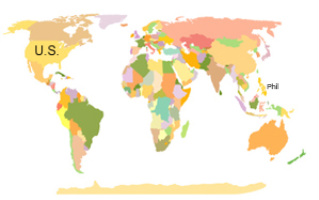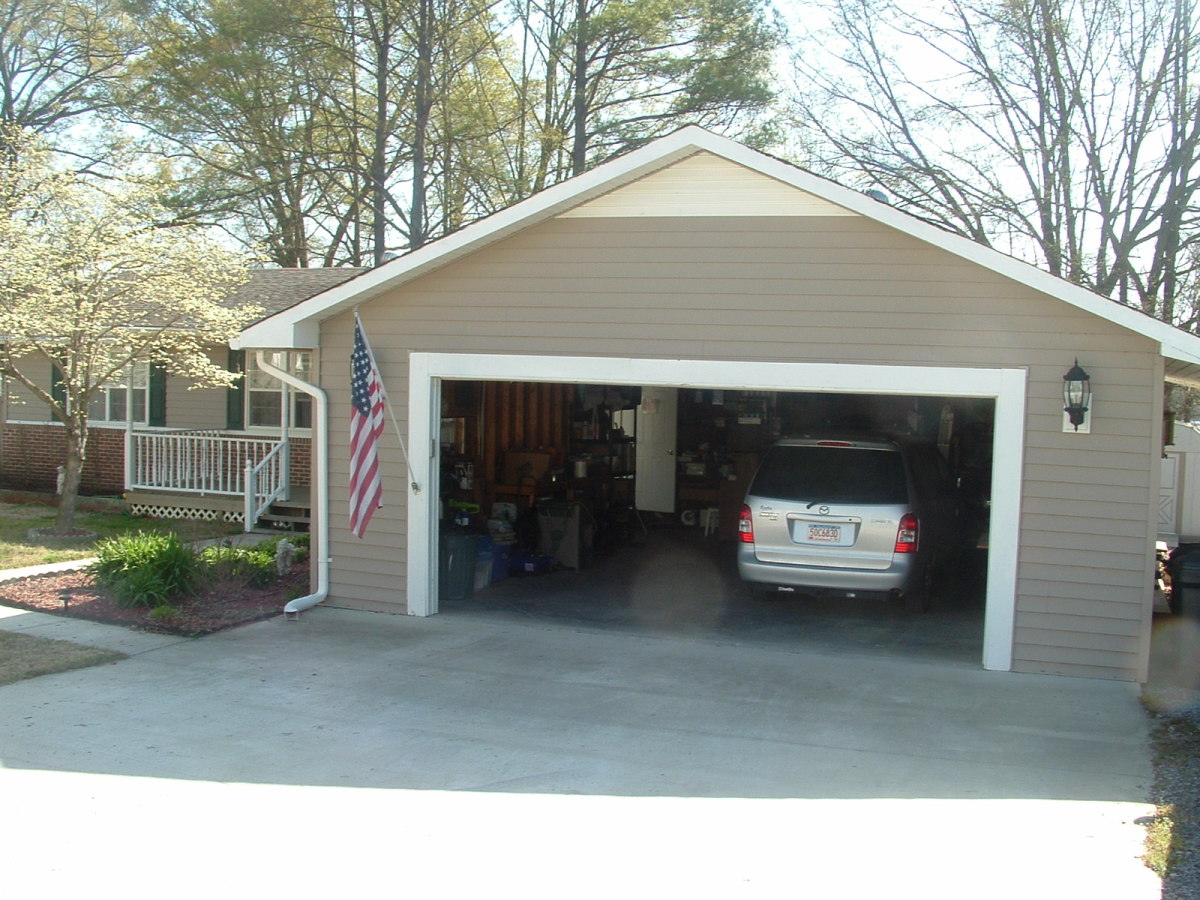What the Big U.S. Can Learn from the Small Philippines

What can the U.S., with over 3.5 million square miles of land, 308 million people and $14,441 billion GDP learn from the Philippines, a struggling nation of just around 116,000 square miles of land, 92 million people and only $167 billion GDP?
Not sophisticated technology. Not sophisticated financial instruments. We've none of these. Just some loan basics.
Over the past two years, I’ve been reading about the U.S. housing meltdown because it’s the subject assigned to me by my U.S. writing clients, and as I read news, opinions and comments from ordinary Americans, I now realize that there are financial problems faced by ordinary Americans not faced by ordinary Filipinos, like me, simply because there are some financial services not readily and easily available to most of us here.
Even U.S. economists and government officials now admit that lenders have been too relaxed over the past years. As U.S. lawmakers debate the proposed creation of the Consumer Financial Protection Agency and the solution of the foreclosure crisis, perhaps they can focus more on how lax they really have become about loans.


1. Loan Refinancing, Home Equity Loan or Home Equity Line of Credit
These types of loans are not readily available to most people in the Philippines. This may indicate lack of financial sophistication, but it has prevented many Filipinos from using their homes to finance their car purchases, travel and other non-emergency needs, and therefore from being evicted from foreclosed homes.
According to American housing analysts, many Americans complain about depressed home prices and negative equity, but they can’t deny the fact that many of them refinanced or borrowed on their home equity more than they could afford to pay. Many refinanced to pay medical costs and college tuition for their children, but many others borrowed to buy a bigger car, finance a home improvement project or travel to an exotic place – expenses that could have been avoided if these loans were not easily available.
With the entry of foreign banks into the Philippines, some of them, including local banks, have started offering home equity loans, loan refinancing and HELOC loans, but I hope these loans do not become as popular as credit cards – which have already pushed many Filipinos to overspending and delinquency.
2. Online Payday Loans
One can rarely surf these days without seeing ads for payday loans, and Americans can get them just by a few clicks. In the Philippines, we don’t have yet these online quick loans. There are credit card loans offered online, but they can’t be obtained without submission of additional documents or visit to the lender’s office.


3. Student Loans and Credit Cards for College Students
It's amazing that college students in the U.S. can just go to the Sallie Mae and other student loan sites, fill out some e-forms and then get money. College students could easily get cards without their parents' co-signatures.
A recent 2009 Sallie May survey found that 84 percent of all U.S. undergraduates hold at least one credit card and that around 50 percent hold 4 or more cards. On average, college students hold 4.6 cards and that their average balance is $3,173.
Here in the Philippines, college students can hold cards only if they are made supplementary card holders by their parents. To my knowledge, not many working-class parents do this.
Since there are no student loans available to Filipino college students, except for the little known easily exhausted government student loan program, financially-struggling college students go to public universities, bearing lack of facilities, but graduating debt-free with help from resourceful and creative professors.
In contrast, U.S. college students who enter expensive private schools through student loans come out of them after several years burdened with at least three debts: student loans, car loans and credit card loans. Of course, there’s value in going to private universities, but according to financial planners, parents need to give the issue a lot of thought.
A recent postsecondary student aid study by the U.S. Education Department showed that college students graduate with an average debt of $23,186.
I watched one recent Oprah episode where well-known financial planner Suze Orman advised a father who was planning to use loans and his retirement funds to send her two daughters to big universities. Orman advised the father to consider sending her daughters to public universities, stating there are a lot of good state universities. She even added that she graduated from a state university, the University of Illinois, and now earning much more than many batch mates who studied at very expensive schools.
Issue of Underwater Mortgages
Previously I wondered why a number of Americans deliberately stop paying their amortizations just because the market values of their homes have gone down temporarily because of the current crisis. Isn’t it a reality that land values appreciate over the years?
Then I realize that many Americans are geographically mobile. Because of their large land area and the availability of various options in various places throughout the U.S., they hardly stay in one place. They buy a home, stay for a few years, resell the home, and then move to another place or move up.
In contrast, many Filipinos move only once or twice in their lifetime. They may go all around the world to work, but many stay in the same houses they bought or inherited, improving them as they send home their dollars.
So temporary depression of prices, such as in Pampanga after the Pinatubo explosion, and in Marikina, after the Ondoy floods, is not a major concern. They know that property values will go up again.
States
| Foreclosure Rates
| Foreclosure Filings
|
|---|---|---|
1. Nevada
| 1 in 23
| 47,925
|
2. Arizona
| 1 in 53
| 50,342
|
3. California
| 1 in 53
| 250,054
|
4. Florida
| 1 in 56
| 156,924
|
5. Idaho
| 1 in 97
| 6,531
|
6. Utah
| 1 in 97
| 9,553
|
7. Georgia
| 1 in 119
| 33,385
|
8. Michigan
| 1 in 122
| 37,026
|
9. Colorado
| 1 in 131
| 16,265
|
10. Illinois
| 1 in 141
| 37,270
|
(Foreclosure Filings = Number of houses notified of defaults or foreclosures)
(Foreclosure Rate = Ratio of houses in foreclosure to total number of homes)
Foreclosure Filings in the U.S. -- Third Quarter of 2009
Total number of homeowners who received default or foreclosure notices: 937,840
Foreclosure rate: One in every 136 households in the U.S. received a default or foreclosure notice
Source: RealtyTrac
What Then?
On the whole, what U.S. policy makers can learn from their housing crisis and from smaller nations whose banking systems were intact during the downturn is the need to tighten their control of housing and personal loans.








